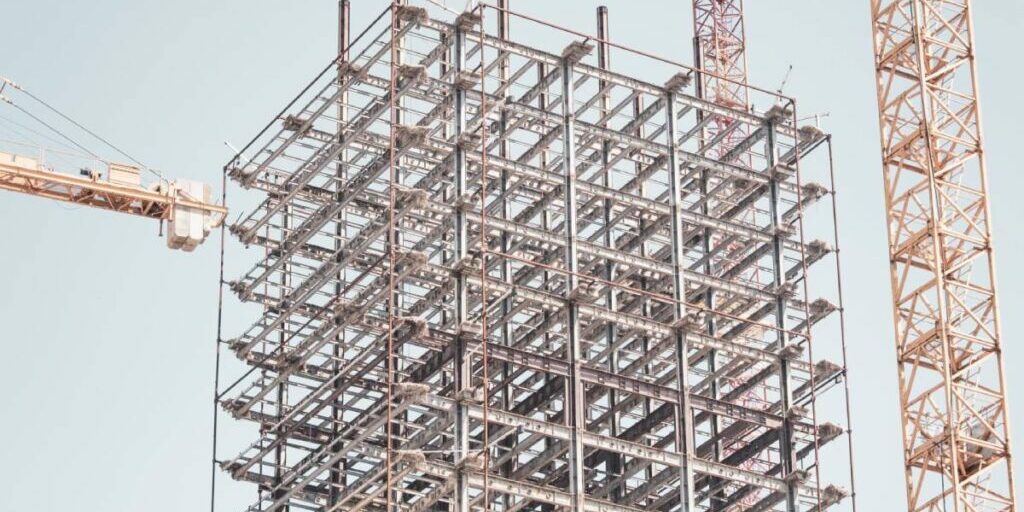Is Collaborative Construction Our Path out of Crisis?

We often assume the best way to get ahead is through competition.
That mindset is true in construction, where projects are won or lost based on a competitive bidding structure. But a growing body of research shows this thinking is counterproductive.
According to experts, projects based on a competitive bidding structure have no winner–least of all the “winning” lowest qualified bidder. And when budgets and timelines spin out of control, the project owner loses too.
So what’s the alternative?
Here’s what we cover:
Collaborative Construction through Integrated Project Delivery (IPD)
Competing against each other isn’t working. The alternative is collaboration. And the motivations to collaborate are clear:
- Environmental:
The construction industry wastes an incredible amount of natural resources each year. Over 600 million tons in the United States alone (EPA 2018). That amount of egregious waste isn’t good for our industry or our planet. - Societal:
We have an aging workforce and a severe lack of new talent entering our industry. This is especially true in the skilled trades. And who can blame our youth for avoiding an industry fraught with risk, hard work, long hours, and frequent layoffs? We must rethink how work gets done and retool our workforce to respond. - Economical:
The industry wastes an enormous amount of capital each year as well. Budget overruns are commonplace while profit margins continue to shrink. Progress is passing us by, and it’s costing us billions.

Integrated project delivery explained
Integrated project delivery (IPD) addresses these issues and provides a way out.
Under an integrated project delivery model, competition disappears. Multi-party contracts bring owners, design professionals, suppliers, and contractors together. By sharing knowledge and experience, these collaborative teams explore innovative ways to deliver more value faster and at less cost.
This model also distributes the risk amongst stakeholders and ties compensation to the project’s overall success.
Integrated Project Delivery For Public and Private Owners: via AGC
Collaborative Construction and IPD in Practice
Moving from the competitive model to a collaborative mindset isn’t without its challenges. Every aspect of the construction process has to change.
But there’s a growing contingency of early adopters successfully forging the path.
Here are the foundational principles that make it work:
- Invest in the collaborative process early.
The initiative to enter collaborative agreements must come from the project owner, but contractors can push for this too. The first step for contractors is an honest assessment of their current capacity. Next, internal teams can begin implementing the collaborative technology and outside industry professionals they need to round out their capacity. - Begin with a relationship building mindset.
Trust is the cornerstone of every great relationship, and the willingness to be vulnerable is vital. Shifting our focus from the value of a dollar to the value of relationships will pay dividends well into the future. Here is where investing in the interpersonal skills of our teams is critical for success. A ‘people first’ philosophy is vital. - Transparency and open communication.
Here again, mindset makes the difference. Shifting the culture from competitive to collaborative will take some work. But when compensation and rewards are tied to the project’s success, the motivation to work towards mutual benefit will follow. The old “cover yourself” mentality will give way to camaraderie. And as a result, productivity and job satisfaction will soar. - Alignment of goals.
A relationship-building mindset and commitment to open communication make goal alignment easy. The push is for teams to feel unified and confident, working towards a common aim. Under this umbrella, the risk is mitigated, safety improves, costs are controlled, and production naturally increases.
Implement Your Collaborative Construction Framework Now
Collaborative contracts are new, but their popularity is growing. Especially since research shows we have the potential to deliver projects “30 to 50 percent faster and cheaper” than with traditional methods.
The ‘winners’ in this new competition will be the organizations with the capacity and infrastructure to set the standard for collaborative relationships with their project owners, design teams, subcontractors, and suppliers.
Fully integrated collaborative software platforms are the solution to better communication, scheduling, workflow, and job site management. And they are the key to building a stronger, more resilient financial future for our industry.
Get a free demonstration for yourself.
And see how the power of collaboration can secure your future with Linarc.




